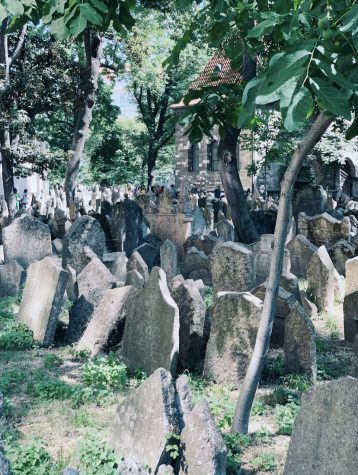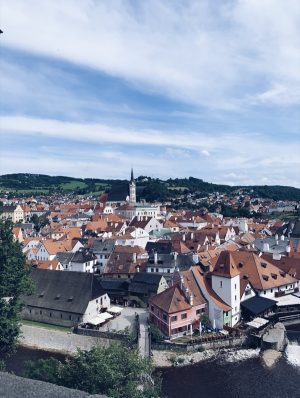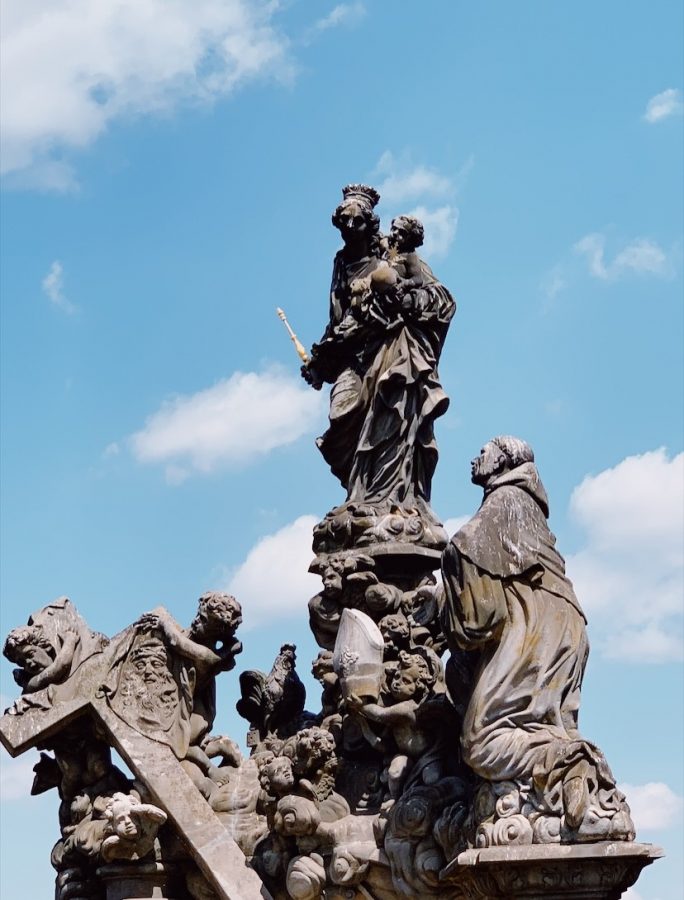Czech Your Facts
A run down on the Czech Republic’s history and culture
Statuary along the St Charles Bridge!

When I visited the Czech Republic in the summer of 2019, I realized how much culture from the past still lives on to this day. Their traditions are a mix of both German and Slavic lands. I observed the most amazing stone architecture in buildings that dated back to 1280. These buildings tend to have a renaissance style and can also have a gothic complexity. The building techniques are part of the Czech Republic’s culture.
Most Czechs celebrate Christian holidays including Christmas, Christmas Eve, and Easter. In the Czech Republic, the cultural food staples include potato and sauerkraut soups, all different types of meat, and saving the best for last, apple strudel for dessert.
Surprisingly, the republic has its own dance called the Polka, which originated in the 19th century. As you might have guessed, the official language in the Czech Republic, is Czech.

The country was first populated by Celtics in the 4th Century B.C. The Holy Roman Empire ruled over the land until the 1800s, when the Austrians and the Habsburg Empire took control and the Celts were forced to move on to a different land. By the 19th century, industry was booming and Czechoslovakia was formed into a state, but as a result of the Munich Conference, it came to an end. The country was split into separate states, Czech and Slovak republics, on January 1st, 1993.
The Czech Republic, similar to the US, has a Multi-Party System. There are nine parties but the two largest are the left-wing Czech Social Democratic Party (ČSSD) and right-wing Civic Democratic Party (ODS). These parties tend to have around the same number of supporters, but the Communist Party of Bohemia and Moravia is just about one percent higher on the charts according to Wikipedia’s list of political party supporters in the Czech Republic. The country has a President which is the head of state and the Prime Minister who takes control over the government and gives the executive orders. This is why it is classified as a Parliamentary republic. Politically, through everything the Czech Republic has endured, it is still one of the most stable countries in Central Europe.

The Czech Republic is a modern country with all the necessities and accommodations needed to thrive, therefore it is a great society to reside in. Health care in the Czech Republic is government funded. Daily life is similar to the US. People drink Starbucks and receive their daily news through Facebook, public radio, Cesky Rozhlas and two leading broadcast news sources, Nova, and CNN Prima. People reside in Cities, Suburbs, and the Countryside. There are similar job opportunities and the businesses as well. The Capital, Prague, is known for being the biggest business hub in the country. One of the most amazing things about the country is that during WWI and WWII, Prague was the only city that did not get damaged at all. It was spared in WWII by the Germans as a place to remember what they had stolen, basically keeping the city as a trophy.
I feel very lucky to have had the opportunity to visit the Czech Republic. From the churches, architecture, and historical sites, to the people in the country-side, it is a magical country. The historical experience I received when visiting castles, cemeteries, and an actual church made of human bones is second to none.

